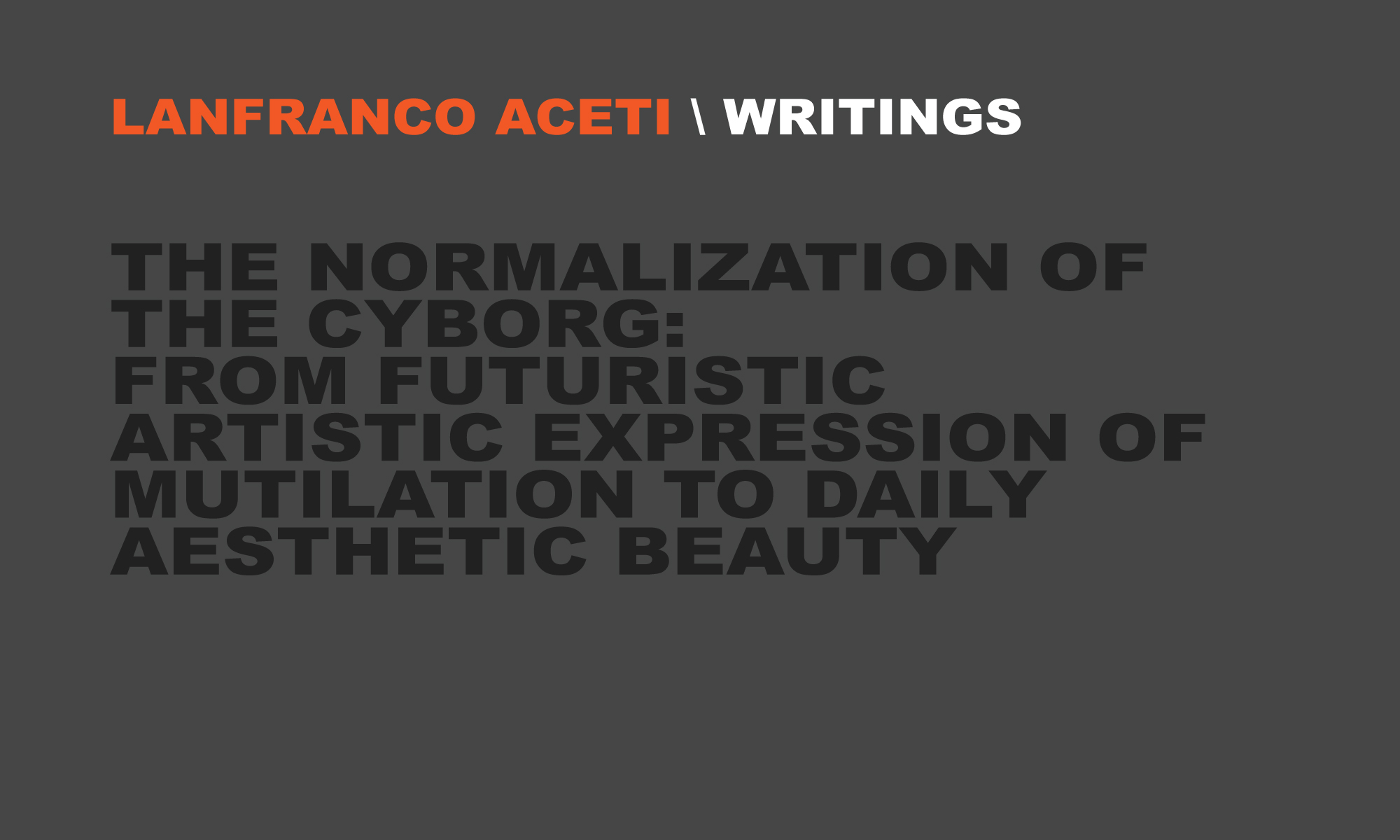THE NORMALIZATION OF THE CYBORG: FROM FUTURISTIC ARTISTIC EXPRESSION OF MUTILATION TO DAILY AESTHETIC BEAUTY
ABSTRACT
The concept of mutilation as a permanent scarring of the integrity of the body has been overcome by the representation in visual culture of the cyborg, the bionic human and the genetically and bionically engineered mutant. Mutants with bionic prosthetics in the X-Men film trilogy, the bionic man in The Six Million Dollar Man (1974-1978) and his companion The Bionic Woman (1976-1978) as well as The Terminator (1984) with its sequels have contributed to create a new aesthetic perception of the artificial.
From the Cyborg Manifesto to theories of Post-humanism and Trans-humanism, the arts have embraced the opportunity of realizing the conjunction between human and machine, first envisaged by Tommaso Marinetti in the Futurist Manifesto. Stelarc has contributed with his performances and body implants to explore new aesthetic forms that conceive the prosthesis as an evolutionary empowering design.
If in the arts this approach has created aesthetic debates and polarizations between bioconservatism and technoprogressivism, how is the reality of mutilation perceived by people in their daily lives?
The paper analyzes whether the aesthetic perception of prosthetics is that of a permanent sign of mutilation or that of a new technological empowerment.
“In the last two to three years many men have asked to have prosthetics without coverage, leaving the metal part visible. They tell me that a leg like this is more futuristic! Maybe they feel more masculine because the metallic leg gives them the sensation of being bionic, half human and half machine. Men under fifty especially request it. At the opposite end of the spectrum, women ask for symmetric prosthetics very similar to the one they lost.” Interview with Dr. X at the Limb Fitting Centre, London, by Valentina Sessa.
If the visual arts have created an experience and imagination of post-humanity as the futuristic merging of human and machine that the public perceives as increasingly achievable, what are the new frontiers of aesthetic exploration?
Are the aesthetics of post-humanity becoming those of a ‘normalization’ of cyborgology? The paper will argue that the contemporary aesthetics of futuristic empowerment look to artists and designers in order to deliver new modes of aesthetic consumption for a technology no longer perceived as reconstruction of a mutilation but as the empowering necessary framework to facilitate the transition from human to super-human.
KEYWORDS
Aesthetics, cyborg, post-humanism, trans-humanism, Futurism






